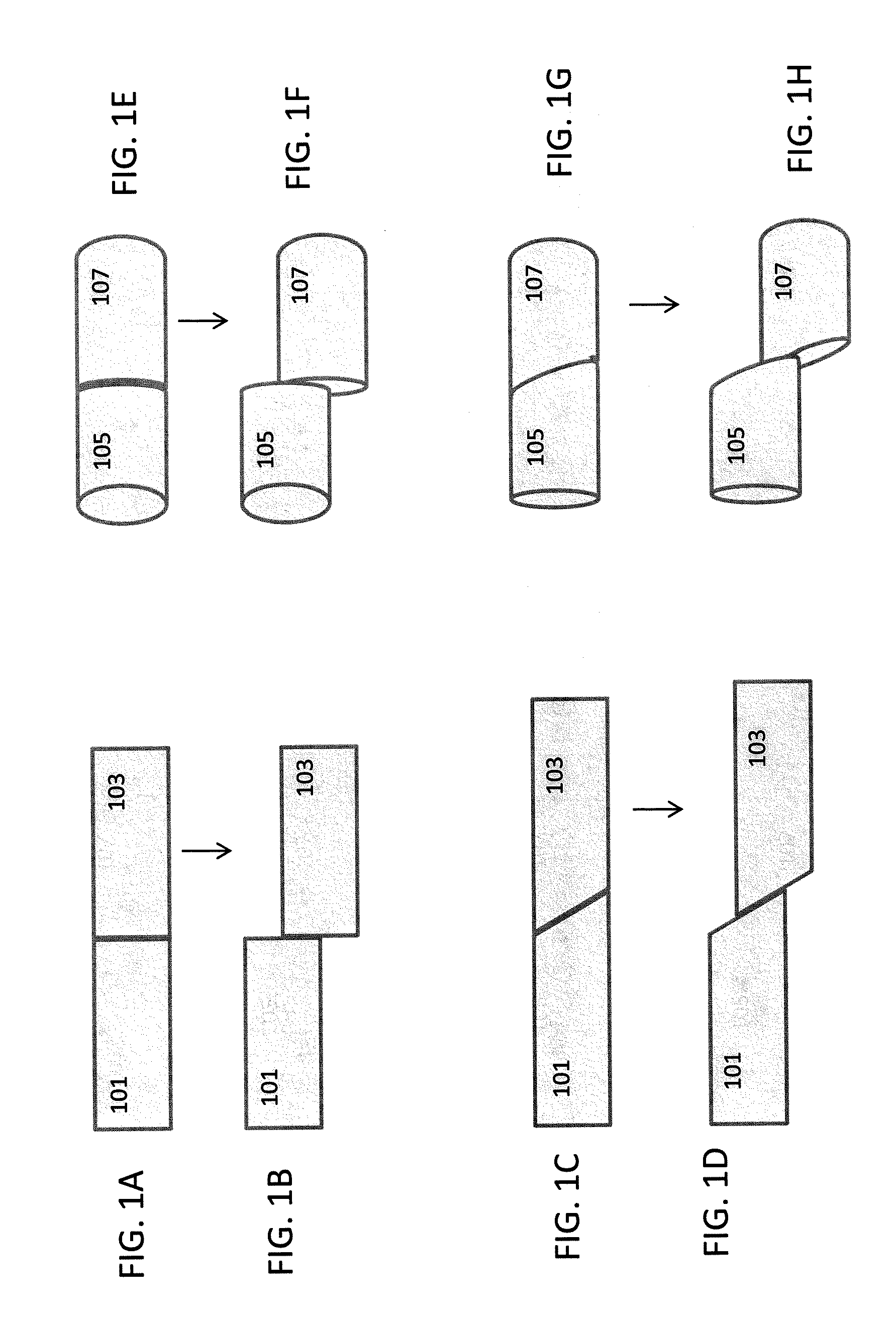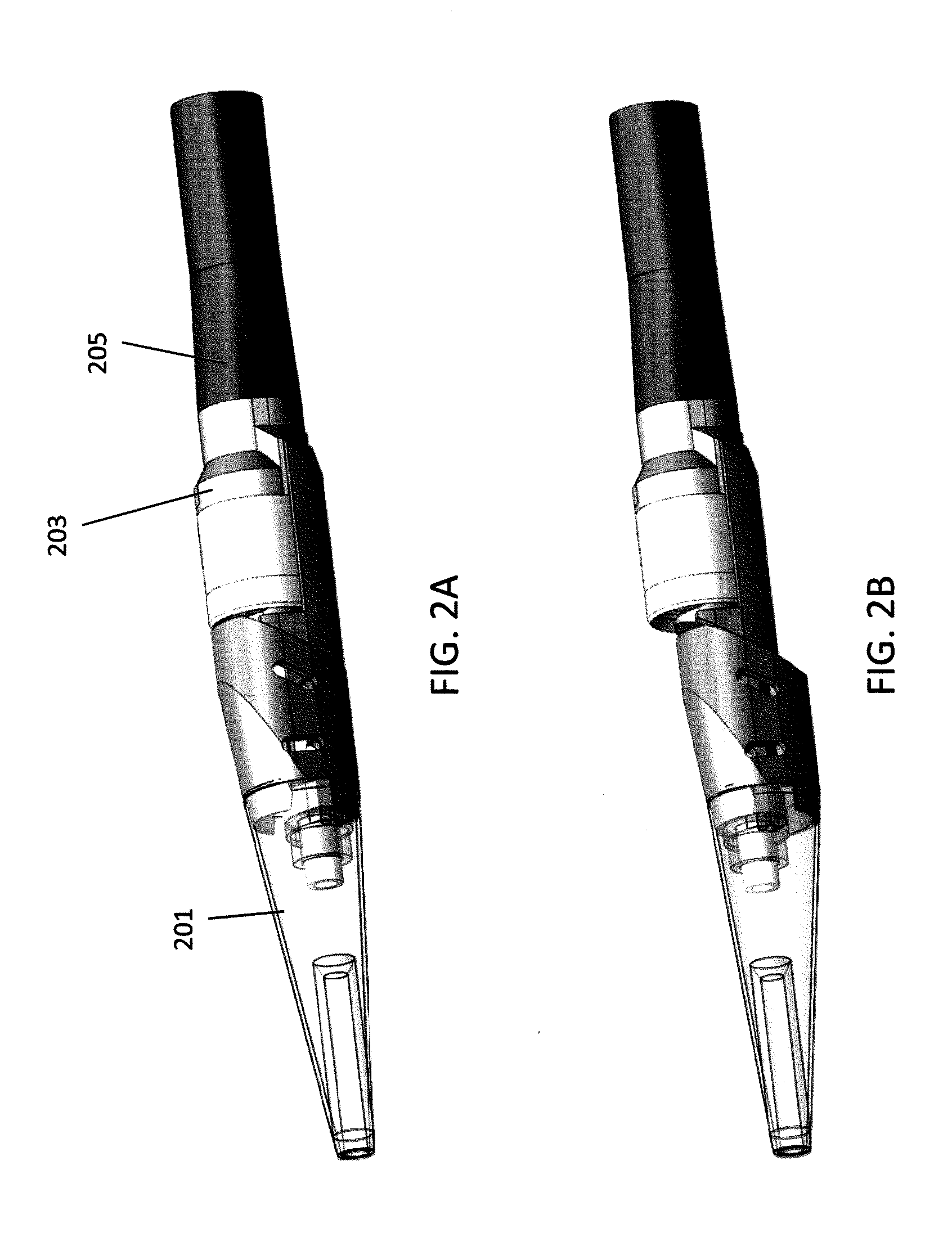Atherectomy catheter with laterally-displaceable tip
a catheter and lateral technology, applied in the field of catheters with laterally displaceable tips, can solve the problems of limited market adoption, need for large access devices, and traditional atherectomy devices, and achieve the effects of minimizing the depth of cut, reducing procedure time, and maximizing the cross-sectional area of cut tissu
- Summary
- Abstract
- Description
- Claims
- Application Information
AI Technical Summary
Benefits of technology
Problems solved by technology
Method used
Image
Examples
Embodiment Construction
[0075]In general the atherectomy devices described herein include laterally displaceable distal tip regions. FIG. 1A-1H illustrate examples of lateral displacement. As used herein, lateral displacement includes movement of the distal tip region of a catheter from a first position in which the long axis of the distal tip region (the longitudinal axis of the distal tip region) is in-line with the long axis of the proximal body of the catheter (the longitudinal axis of the catheter body) to a second, laterally displaced, position in which the distal tip region has shifted out plane so that the long axis of the distal tip region is parallel with the long axis of the catheter body, but in a different plane. The terms “parallel” and “in line” in reference to the long or longitudinal axis do not require that the catheter regions be straight.
[0076]FIGS. 1A and 1B, illustrate lateral displacement of a rectangular region having a proximal 101 and distal 103 elements. In FIG. 1A, the proximal ...
PUM
 Login to View More
Login to View More Abstract
Description
Claims
Application Information
 Login to View More
Login to View More - R&D
- Intellectual Property
- Life Sciences
- Materials
- Tech Scout
- Unparalleled Data Quality
- Higher Quality Content
- 60% Fewer Hallucinations
Browse by: Latest US Patents, China's latest patents, Technical Efficacy Thesaurus, Application Domain, Technology Topic, Popular Technical Reports.
© 2025 PatSnap. All rights reserved.Legal|Privacy policy|Modern Slavery Act Transparency Statement|Sitemap|About US| Contact US: help@patsnap.com



